Opinion & Analysis
What If It’s Our Fault Golfers Fizzle?
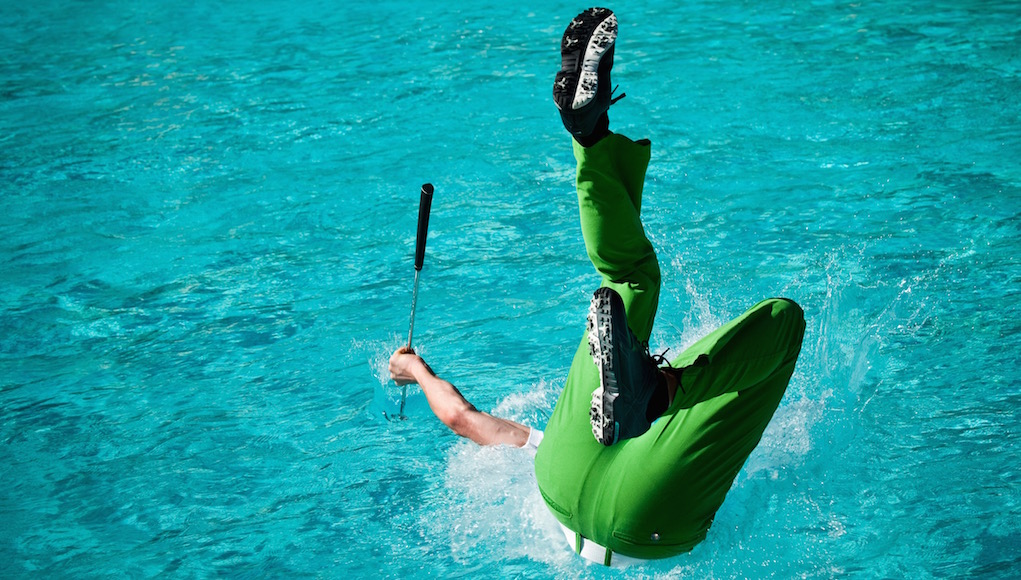
As writers, we are often caught at the end of a golf season making excuses for our disproven theories shortly after the unexpected has happened. I had my fill after this year’s Masters. While Sergio was slipping on the Green Jacket I was sitting on my couch wondering how the hell he had pulled it off. Not two hours earlier I’d sat on that same couch and Tweeted that El Niño was finished as he gingerly approached his ball in the pine straw of Augusta’s 13th. Yet as many times as we’ve found ourselves in this situation, we have an obligation to try and provide some insight into how the future will unfold, even if it is a fruitless effort. The question is, what’s the impact of hoisting an unproven player on a pedestal?
In April of last year, not long after we writers were scrambling to determine if Jordan Spieth would spend the rest of his life in an underground bunker, Chuck Klosterman published his book entitled, But What If We’re Wrong?: Thinking About the Past As If It Were the Present. In his book, Klosterman examines times in the past when people were utterly wrong about convictions they knew to be fact. Klosterman points to things as foundational as our understanding of gravity. In the book, he quotes theoretical physicist, Brian Greene:
“For 200 years, Isaac Newton had gravity down. There was almost no change in our thinking until 1907. Then between 1907 and 1915, Einstein radically changes our understanding of gravity. No longer is gravity just a force, but a warping of space and time.”
What Klosterman doesn’t talk about is the impact being wrong has on the world around us. Most of the time it’s not a big deal, because we have to be wrong in order to fail, and we have to fail in order to innovate. I think about this often because as Klosterman writes, and I agree, “I’ve spent most of my life being wrong.” Here’s a tattered example that was almost as foundational to the golf world as gravity to Newton: Tiger Woods will break Jack Nicklaus’ record of 18 major championships. Sadly this idea is now little more than a fleeting ambition. And while it took the perception of gravity two centuries to be shaken, Tiger’s ambitions seem to dwindle in a matter of hours. Did we, the media, have an impact on where Tiger resides today? I think we have to assume it could be possible to some degree.
That’s the interesting thing about the past. We have as much time to observe and study it as we’d like, but the present is here, then it’s gone and is suddenly transformed and available for introspection.
Anthony Kim set fire to the tour in 2007-2008. In 2007 alone (his first full year on the PGA Tour), he made north of $1.5 million, had 10 top-25 finishes and four top-10s. In 2008, he won twice in five weeks (at Quail Hollow and Congressional). Kim was going to be the next guy that gave Tiger a run. They were both Nike athletes and Kim was known as a feel player, which was opposite of how Tiger approached the game. In a clinic the two hosted together, a patron asked Kim what he did to control distance with his wedges. “My answers are terrible if you guys are trying to learn something,” he said. The crowd laughed. “I just try and figure out how far I’m hitting them right before I go play,” he said. That’s a feel player if there ever was one.
Everybody knew Kim was the next big thing. And while there have been players we were right about — Phil Mickelson, Rory McIlroy, Dustin Johnson and Jordan Spieth — for each one that did what we expected, there are 30 guys we said would be the guy and they fizzled out.
What I’d like us to think about is this: what if we’re the reason they fizzle out? If we as writers are asked to speculate, then I have to do my best to try and take a different road here. Klosterman asks, “But what if we’re wrong?” I’m asking, “What if it’s our fault we’re wrong?”
Of all sports, golf is the most fickle. We could almost say it’s a game that rests on the laurels of our hormones. Here’s a personal example. A couple of weeks ago I was playing one of the city municipal courses here in San Antonio, Mission Del Lago. My tee time was at 8:08 a.m. on that Saturday and as usual, I went alone. After I checked in the starter paired me up with a twosome and off we went. Despite starting the round with a weak double-bogey at the first, I rallied to get back to even par by No. 7 with a couple birdies.
|
Of all sports, golf is the most fickle. We could almost say it’s a game that rests on the laurels of our hormones.
|
I managed a couple pars at Nos. 8 and 9 to make the turn in 36. But after a birdie at a par-3 12th, followed by another one at the par-5 15th, I was on my way to shoot the best round of my life. To that point, I’d managed to stay out of my own way, not thinking too much about the score and just playing shot to shot. Then it happened. “Hey man, you’re playing great! What are you, like one or two over?” my partners asked.
“Well, I’m actually two under,” I replied as calmly as possible.
“No way! That’s awesome! You’re the best player I’ve ever played with,” the guy shot back.
Game over.
I proceeded to make a triple at No. 16, a double at No. 17, and another double at No. 18 to finish at five-over par on the day. It was the most crushing 77 I’ve ever shot in my life.
Now, I’m not blaming my partners for my dreadful finish. But the problem is that in golf, once you have an idea in your head, it’s incredibly hard to shake it. I guess that’s what separates the elite players from the really good players. But what if the impact we (the media) have on a player’s future is underrated? What if it’s not the money or the sudden influx of people wanting more and more of their time? If we’re trying to look at the present as the past, then we have to ask that question, what if our prediction is the reason they didn’t succeed to the degree we expected or predicted them to?
What if, after Spieth hit that ball in the water on No. 12 at last year’s Masters, nobody had said a word? What if it was just ignored like every shot Ian Woosnam has hit at Augusta for the past decade? Or what’s more, what if we hadn’t mentioned it at all after that Green Jacket Ceremony in Butler Cabin. Every time Jordan Spieth had to answer the question, “Do you feel like you’ve moved past the water ball on the 12th at Augusta?,” he was forced to relive the moment he lost his chance at winning back-to-back Green Jackets. All the frustration and angst, the panic he must have had to stifle as he walked off the 12th green.
What if it wasn’t a topic of discussion for a year? Would Spieth have hit it in the water again on Sunday this year? I don’t know. But it’s interesting to think about. It’s interesting to think about the futures we plan out for these players, if even in a vague sense, and the surmounting pressure that shadows those plans.
|
That’s a lot of pressure for a 23-year-old kid. I’d have buckled like a baby deer learning to walk.
|
What if we’d never dubbed Anthony Kim as the next great thing to take down El Tigre? Would he have made a stronger comeback after his thumb injury? This is the guy that, in his first Ryder Cup, in the first match on Friday, pummeled Sergio Garcia 5&4. I mean, he had a heavy burden on his shoulders when he was scheduled to come back. He was the it guy. That’s a lot of pressure for a 23-year-old kid. I’d have buckled like a baby deer learning to walk.
This concept of media creating what I’m going to dub as a reverse-self-fulfilling-prophecy is not unique to golf; it’s just that golf has proven to be the more fragile of the games. We see it each year with the NFL Draft. Quarterback “Y” is going to be the next Peyton Manning or Wide Receiver “X” is going to be the next Jerry Rice. And then someone like Tom Brady rides in on the white stallion of obscurity to become the greatest of all time. The major example that shoots this theory in the foot is Tiger Woods. But when we examine Tiger, we have to throw him out because he was raised in the spotlight. Hell, he was on The Mike Douglas Show in the same segment with Bob Hope at the age of two. Everything about him is an anomaly. Except that he, too, fell short of our expectations.
During television interviews, almost every professional golfer claims they don’t read about themselves or watch all that much golf at all. I buy it from the seasoned veterans, but not from the young guys. I’m not saying they’re lying, I’m just saying that I, as a writer, read every single comment on every article I write, and I think about each one. It affects me. And we’re talking small scale, like less than 1,000 comments on over 100 articles I’ve written. Imagine if, at the age of 23, you’re being dubbed as the player of a generation. It has to affect you. It’s just human nature.
John Rahm is a recent example. As of today, he’s exceeding expectations. But success in golf can enter stage right and exit stage left without so much as a passing nod. With a handful of top-10s, a win at Torrey Pines, a runner-up at the Match Play, and an excellent showing in his first Masters, we’ve built him up as the next great Spaniard. I hope he is, but what if we’re wrong?
There’s no way to curtail analysts making predictions, even bold predictions. And what fun would that be anyway? However, I think it’s fair to assess what the second- and third-order effects are of making predictions about players. It’s fair to wonder if the constant media feed claiming this player will be a star and that player will achieve “X” can have a negative impact. What if we’re constantly creating false positives?
I don’t know, maybe I’m wrong.
- LIKE44
- LEGIT4
- WOW3
- LOL24
- IDHT1
- FLOP24
- OB24
- SHANK57
19th Hole
Vincenzi’s LIV Golf Singapore betting preview: Course specialist ready to thrive once again

After another strong showing in Australia, LIV Golf will head to Sentosa Golf Club in Singapore looking to build off of what was undoubtedly their best event to date.
Sentosa Golf Club sits on the southern tip of Singapore and is one of the most beautiful courses in the world. The course is more than just incredible scenically; it was also rated 55th in Golf Digest’s top-100 courses in 2022-2023 and has been consistently regarded as one of the best courses in Asia. Prior to being part of the LIV rotation, the course hosted the Singapore Open every year since 2005.
Sentosa Golf Club is a par 71 measuring 7,406 yards. The course will require precise ball striking and some length off the tee. It’s possible to go low due to the pristine conditions, but there are also plenty of hazards and difficult spots on the course that can bring double bogey into play in a hurry. The Bermudagrass greens are perfectly manicured, and the course has spent millions on the sub-air system to keep the greens rolling fast. I spoke to Asian Tour player, Travis Smyth, who described the greens as “the best [he’s] ever played.”
Davis Love III, who competed in a Singapore Open in 2019, also gushed over the condition of the golf course.
“I love the greens. They are fabulous,” the 21-time PGA Tour winner said.
Love III also spoke about other aspects of the golf course.
“The greens are great; the fairways are perfect. It is a wonderful course, and it’s tricky off the tee.”
“It’s a long golf course, and you get some long iron shots. It takes somebody hitting it great to hit every green even though they are big.”
As Love III said, the course can be difficult off the tee due to the length of the course and the trouble looming around every corner. It will take a terrific ball striking week to win at Sentosa Golf Club.
In his pre-tournament press conference last season, Phil Mickelson echoed many of the same sentiments.
“To play Sentosa effectively, you’re going to have a lot of shots from 160 to 210, a lot of full 6-, 7-, 8-iron shots, and you need to hit those really well and you need to drive the ball well.”
Golfers who excel from tee to green and can dial in their longer irons will have a massive advantage this week.
Stat Leaders at LIV Golf Adelaide:
Fairways Hit
1.) Louis Oosthuizen
2.) Anirban Lahiri
3.) Jon Rahm
4.) Brendan Steele
5.) Cameron Tringale
Greens in Regulation
1.) Brooks Koepka
2.) Brendan Steele
3.) Dean Burmester
4.) Cameron Tringale
5.) Anirban Lahiri
Birdies Made
1.) Brendan Steele
2.) Dean Burmester
3.) Thomas Pieters
4.) Patrick Reed
5.) Carlos Ortiz
LIV Golf Individual Standings:
1.) Joaquin Niemann
2.) Jon Rahm
3.) Dean Burmester
4.) Louis Oosthuizen
5.) Abraham Ancer
LIV Golf Team Standings:
1.) Crushers
2.) Legion XIII
3.) Torque
4.) Stinger GC
5.) Ripper GC
LIV Golf Singapore Picks
Sergio Garcia +3000 (DraftKings)
Sergio Garcia is no stranger to Sentosa Golf Club. The Spaniard won the Singapore Open in 2018 by five strokes and lost in a playoff at LIV Singapore last year to scorching hot Talor Gooch. Looking at the course setup, it’s no surprise that a player like Sergio has played incredible golf here. He’s long off the tee and is one of the better long iron players in the world when he’s in form. Garcia is also statistically a much better putter on Bermudagrass than he is on other putting surfaces. He’s putt extremely well on Sentosa’s incredibly pure green complexes.
This season, Garcia has two runner-up finishes, both of them being playoff losses. Both El Camaleon and Doral are courses he’s had success at in his career. The Spaniard is a player who plays well at his tracks, and Sentosa is one of them. I believe Sergio will get himself in the mix this week. Hopefully the third time is a charm in Singapore.
Paul Casey +3300 (FanDuel)
Paul Casey is in the midst of one of his best seasons in the five years or so. The results recently have been up and down, but he’s shown that when he’s on a golf course that suits his game, he’s amongst the contenders.
This season, Casey has finishes of T5 (LIV Las Vegas), T2 (LIV Hong Kong), and a 6th at the Singapore Classic on the DP World Tour. At his best, the Englishman is one of the best long iron players in the world, which makes him a strong fit for Sentosa. Despite being in poor form last season, he was able to fire a Sunday 63, which shows he can low here at the course.
It’s been three years since Casey has won a tournament (Omega Dubai Desert Classic in 2021), but he’s been one of the top players on LIV this season and I think he can get it done at some point this season.
Mito Pereira +5000 (Bet365)
Since Mito Pereira’s unfortunate demise at the 2022 PGA Championship, he’s been extremely inconsistent. However, over the past few months, the Chilean has played well on the International Series as well as his most recent LIV start. Mito finished 8th at LIV Adelaide, which was his best LIV finish this season.
Last year, Pereira finished 5th at LIV Singapore, shooting fantastic rounds of 67-66-66. It makes sense why Mito would like Sentosa, as preeminent ball strikers tend to rise to the challenge of the golf course. He’s a great long iron player who is long and straight off the tee.
Mito has some experience playing in Asia and is one of the most talented players on LIV who’s yet to get in the winner’s circle. I have questions about whether or not he can come through once in contention, but if he gets there, I’m happy to roll the dice.
Andy Ogletree +15000 (DraftKings)
Andy Ogletree is a player I expected to have a strong 2024 but struggled early in his first full season on LIV. After failing to crack the top-25 in any LIV event this year, the former U.S. Amateur champion finally figured things out, finished in a tie for 3rd at LIV Adelaide.
Ogletree should be incredible comfortable playing in Singapore. He won the International Series Qatar last year and finished T3 at the International Series Singapore. The 26-year-old was arguably the best player on the Asian Tour in 2023 and has been fantastic in the continent over the past 18 months.
If Ogletree has indeed found form, he looks to be an amazing value at triple-digit odds.
- LIKE3
- LEGIT3
- WOW1
- LOL2
- IDHT0
- FLOP2
- OB0
- SHANK0
Opinion & Analysis
Ryan: Lessons from the worst golf instructor in America
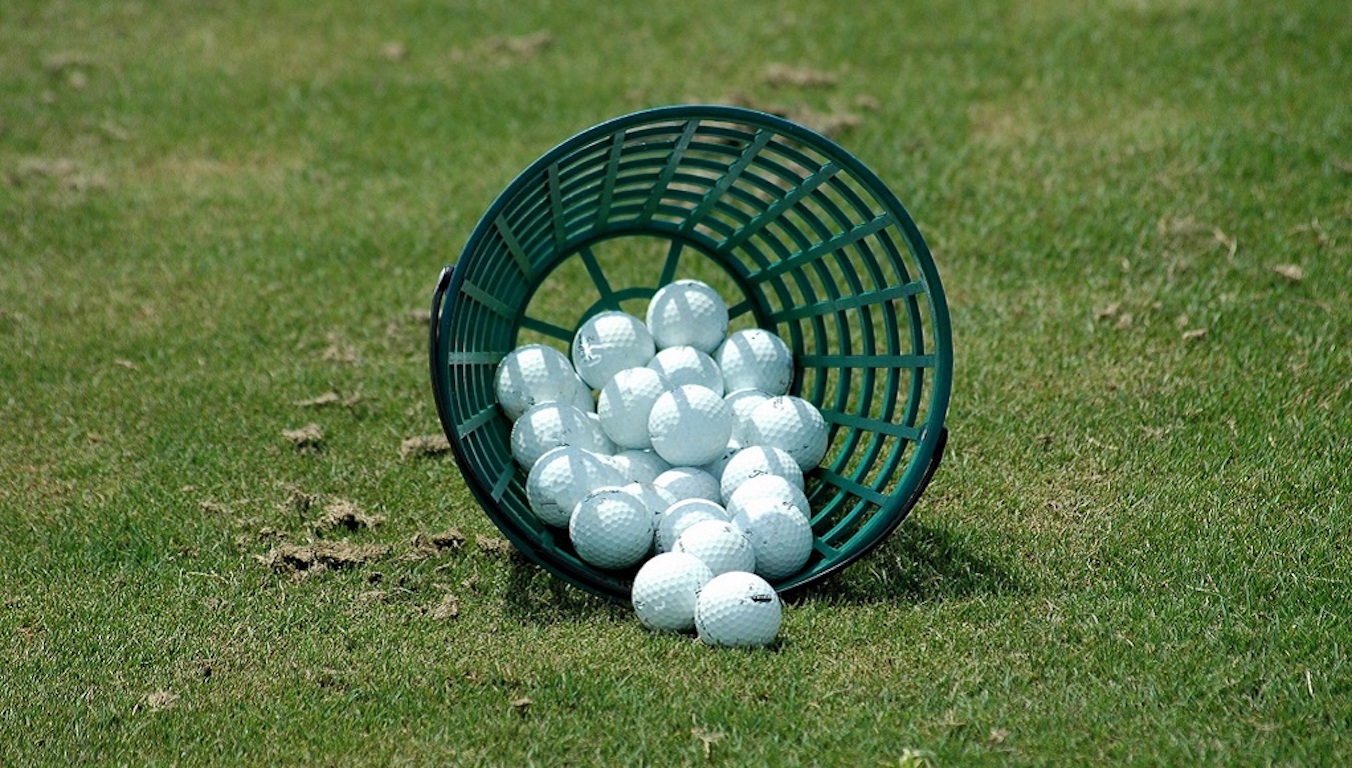
In Tampa, there is a golf course that boasts carts that do not work, a water range, and a group of players none of which have any chance to break 80. The course is overseen by a staff of crusty men who have succeeded at nothing in life but ending up at the worst-run course in America. However, this place is no failure. With several other local courses going out of business — and boasting outstanding greens — the place is booked full.
While I came for the great greens, I stayed to watch our resident instructor; a poor-tempered, method teacher who caters to the hopeless. At first, it was simply hilarious. However, after months of listening and watching, something clicked. I realized I had a front-row seat to the worst golf instructor in America.
Here are some of my key takeaways.
Method Teacher
It is widely accepted that there are three types of golf instructors: system teachers, non-system teachers, and method teachers. Method teachers prescribe the same antidote for each student based on a preamble which teachers can learn in a couple day certification.
Method teaching allows anyone to be certified. This process caters to the lowest caliber instructor, creating the illusion of competency. This empowers these underqualified instructors with the moniker of “certified” to prey on the innocent and uninformed.
The Cult of Stack and Jilt
The Stack and Tilt website proudly boasts, “A golfer swings his hands inward in the backswing as opposed to straight back to 1) create power, similar to a field goal kicker moving his leg in an arc and 2) to promote a swing that is in-to-out, which produces a draw (and eliminates a slice).”
Now, let me tell you something, there is this law of the universe which says “energy can either be created or destroyed,” so either these guys are defying physics or they have no idea what they are taking about. Further, the idea that the first move of the backswing determines impact is conjecture with a splash of utter fantasy.
These are the pontifications of a method — a set of prescriptions applied to everyone with the hope of some success through the placebo effect. It is one thing for a naive student to believe, for a golf instructor to drink and then dispel this Kool-Aid is malpractice.
Fooled by Randomness
In flipping a coin, or even a March Madness bet, there is a 50-50 chance of success. In golf, especially for new players, results are asymmetric. Simply put: Anything can happen. The problem is that when bad instructors work with high handicappers, each and every shot gets its own diagnosis and prescription. Soon the student is overwhelmed.
Now here’s the sinister thing: The overwhelming information is by design. In this case, the coach is not trying to make you better, they are trying to make you reliant on them for information. A quasi Stockholm syndrome of codependency.
Practice
One of the most important scientists of the 20th century was Ivan Pavlov. As you might recall, he found that animals, including humans, could be conditioned into biological responses. In golf, the idea of practice has made millions of hackers salivate that they are one lesson or practice session from “the secret.”
Sunk Cost
The idea for the worst golf instructor is to create control and dependency so that clients ignore the sunk cost of not getting better. Instead, they are held hostage by the idea that they are one lesson or tip away from unlocking their potential.
Cliches
Cliches have the effect of terminating thoughts. However, they are the weapon of choice for this instructor. Add some hyperbole and students actually get no information. As a result, these players couldn’t play golf. When they did, they had no real scheme. With no idea what they are doing, they would descend into a spiral of no idea what to do, bad results, lower confidence, and running back to the lesson tee from more cliches.
The fact is that poor instruction is about conditioning players to become reliant members of your cult. To take away autonomy. To use practice as a form of control. To sell more golf lessons not by making people better but through the guise that without the teacher, the student can never reach their full potential. All under the umbrella of being “certified” (in a 2-day course!) and a melee of cliches.
This of course is not just happening at my muni but is a systemic problem around the country and around the world, the consequences of which are giving people a great reason to stop playing golf. But hey, at least it’s selling a lot of golf balls…
- LIKE17
- LEGIT2
- WOW0
- LOL4
- IDHT1
- FLOP1
- OB0
- SHANK19
19th Hole
Vincenzi’s 2024 Zurich Classic of New Orleans betting preview

The PGA TOUR heads to New Orleans to play the 2023 Zurich Classic of New Orleans. In a welcome change from the usual stroke play, the Zurich Classic is a team event. On Thursday and Saturday, the teams play best ball, and on Friday and Sunday the teams play alternate shot.
TPC Louisiana is a par 72 that measures 7,425 yards. The course features some short par 4s and plenty of water and bunkers, which makes for a lot of exciting risk/reward scenarios for competitors. Pete Dye designed the course in 2004 specifically for the Zurich Classic, although the event didn’t make its debut until 2007 because of Hurricane Katrina.
Coming off of the Masters and a signature event in consecutive weeks, the field this week is a step down, and understandably so. Many of the world’s top players will be using this time to rest after a busy stretch.
However, there are some interesting teams this season with some stars making surprise appearances in the team event. Some notable teams include Patrick Cantlay and Xander Schauffele, Rory McIlroy and Shane Lowry, Collin Morikawa and Kurt Kitayama, Will Zalatoris and Sahith Theegala as well as a few Canadian teams, Nick Taylor and Adam Hadwin and Taylor Pendrith and Corey Conners.
Past Winners at TPC Louisiana
- 2023: Riley/Hardy (-30)
- 2022: Cantlay/Schauffele (-29)
- 2021: Leishman/Smith (-20)
- 2019: Palmer/Rahm (-26)
- 2018: Horschel/Piercy (-22)
- 2017: Blixt/Smith (-27)
2024 Zurich Classic of New Orleans Picks
Tom Hoge/Maverick McNealy +2500 (DraftKings)
Tom Hoge is coming off of a solid T18 finish at the RBC Heritage and finished T13 at last year’s Zurich Classic alongside Harris English.
This season, Hoge is having one of his best years on Tour in terms of Strokes Gained: Approach. In his last 24 rounds, the only player to top him on the category is Scottie Scheffler. Hoge has been solid on Pete Dye designs, ranking 28th in the field over his past 36 rounds.
McNealy is also having a solid season. He’s finished T6 at the Waste Management Phoenix Open and T9 at the PLAYERS Championship. He recently started working with world renowned swing coach, Butch Harmon, and its seemingly paid dividends in 2024.
Keith Mitchell/Joel Dahmen +4000 (DraftKings)
Keith Mitchell is having a fantastic season, finishing in the top-20 of five of his past seven starts on Tour. Most recently, Mitchell finished T14 at the Valero Texas Open and gained a whopping 6.0 strokes off the tee. He finished 6th at last year’s Zurich Classic.
Joel Dahmen is having a resurgent year and has been dialed in with his irons. He also has a T11 finish at the PLAYERS Championship at TPC Sawgrass which is another Pete Dye track. With Mitchell’s length and Dahmen’s ability to put it close with his short irons, the Mitchell/Dahmen combination will be dangerous this week.
Taylor Moore/Matt NeSmith +6500 (DraftKings)
Taylor Moore has quickly developed into one of the more consistent players on Tour. He’s finished in the top-20 in three of his past four starts, including a very impressive showing at The Masters, finishing T20. He’s also finished T4 at this event in consecutive seasons alongside Matt NeSmith.
NeSmith isn’t having a great 2024, but has seemed to elevate his game in this format. He finished T26 at Pete Dye’s TPC Sawgrass, which gives the 30-year-old something to build off of. NeSmith is also a great putter on Bermudagrass, which could help elevate Moore’s ball striking prowess.
- LIKE8
- LEGIT3
- WOW1
- LOL1
- IDHT0
- FLOP3
- OB1
- SHANK2
-

 19th Hole2 weeks ago
19th Hole2 weeks agoJustin Thomas on the equipment choice of Scottie Scheffler that he thinks is ‘weird’
-

 19th Hole2 weeks ago
19th Hole2 weeks ago‘Absolutely crazy’ – Major champ lays into Patrick Cantlay over his decision on final hole of RBC Heritage
-

 19th Hole3 weeks ago
19th Hole3 weeks agoTwo star names reportedly blanked Jon Rahm all week at the Masters
-

 19th Hole3 weeks ago
19th Hole3 weeks agoReport: LIV Golf identifies latest star name they hope to sign to breakaway tour
-

 19th Hole3 weeks ago
19th Hole3 weeks agoNeal Shipley presser ends in awkward fashion after reporter claims Tiger handed him note on 8th fairway
-

 19th Hole2 weeks ago
19th Hole2 weeks agoBrandel Chamblee has ‘no doubt’ who started the McIlroy/LIV rumor and why
-
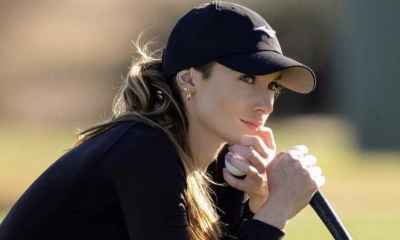
 19th Hole1 week ago
19th Hole1 week agoLET pro gives detailed financial breakdown of first week on tour…and the net result may shock you
-

 Equipment2 weeks ago
Equipment2 weeks agoJason Day on his recent switch into Srixon ZX5 and ZX7 Mk II irons










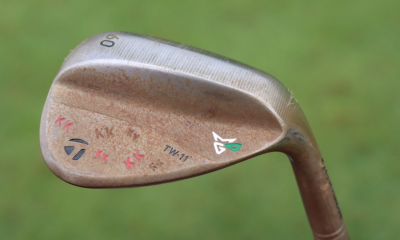

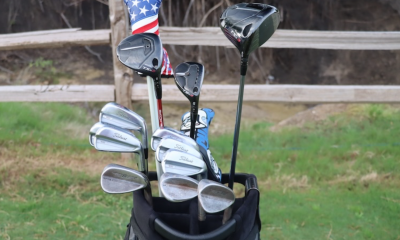

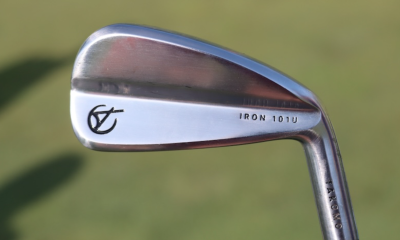

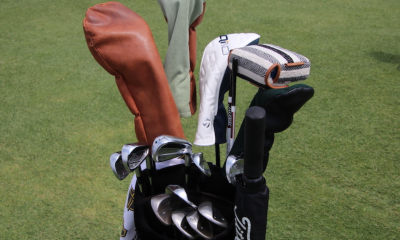

Marnix
May 9, 2017 at 12:41 pm
No, the Heisenberg uncertainty principle does not apply to golf: observing (or writing about) the sport does NOT influence it.
8thehardway
May 10, 2017 at 7:29 pm
The Heisenberg principle asserts a limit to the precision with which certain pairs of physical properties of a particle can be measured (like speed and momentum) so no, it doesn’t apply here.
The OBSERVER EFFECT, on the other hand measures systems, one derivation of which is the Hawthorne Effect, in which people modified their behavior in response their awareness of being observed and analogous to that, Reflexivity can be seen any time acts, things, or people are held up and commented upon or otherwise set apart for consideration.
8thehardway
May 9, 2017 at 5:50 am
I really liked your article – tantalizing examples best pondered over a few pints in a warm pub on a cold night, your own round perhaps the best of the lot for illustrative purposes providing you were there to evaluate alternate lines of reasoning. I’d enjoy a follow-up article that examined your state(s) of mind pre- and post praise, as a friend and I experience a similar ‘pedestal effect’. With me it’s just my putting but my friend is a scratch recreational golfer who will play the first hole from the middle tees if there’s an audience.
Regarding your thesis statement, I’ll hazard it seems you are positing the literary equivalent of the Observer Effect in physics – changes that the act of observation will make on the phenomenon being observed. While the players mentioned aren’t available to comment, let me adopt the Null hypothesis and suggest that if it’s reasonable to assume that growing up Spieth and Kim experienced tons of praise and expectation from multiple sources, either they liked it, learned to handle it or weren’t bothered by it since it didn’t keep them from turning pro; the real question then becomes ‘What differentiates the effects of positive media speculation pre- and post-tour?’
Thanks for a great article.
Adam Crawford
May 9, 2017 at 8:13 pm
Man, I wish I could have had this conversation with you before I wrote the article. You put it better than I did. The Observer Effect is a perfect explanation of what I was trying to get at, I just didn’t have the foresight to explore it. Maybe there is a follow up to be written. Thanks!
8thehardway
May 10, 2017 at 7:11 pm
Definitely, and I’m looking forward to it.
Dave R
May 6, 2017 at 9:35 pm
What ?
John
May 4, 2017 at 12:15 pm
i wish people would stop the personal attacks. It happens in just about every article. Ok, so you don’t agree with an opinion piece, fine, stick to the topic instead of name calling and denigrating the author, someone you don’t even know. It’s really tiresome.
Nice article, Adam, thoughtful and well written.
Adam Crawford
May 4, 2017 at 1:25 pm
Thanks, I don’t understand it either. But hey, it’s the age we live in.
H
May 5, 2017 at 2:10 am
Actually. It’s the other way around. If you don’t want the flak, don’t invite it. Don’t post your own opinion on a public forum like this that allows for other opinions. If you can’t handle other people’s opinions of your own opinions, then you should just not do it in the first place, be quiet and keep it to yourself, and don’t be so full of it.
Adam Crawford
May 5, 2017 at 9:29 am
It’s not about “flak”. I love debating with someone of a different opinion, but debates aren’t supposed to be personal. They are supposed to be a presentation of opinions on a topic, not the person who holds that opinion on said topic. I welcone the opinions of those who disagree with whatever stance I take in my writing, that’s the point. I wouldn’t have written this piece had I expected everyone to agree with it, that defeats the entire purpose of me asking the question I did. But when the debate gets away from the topic and into the personal, it stops being a debate over a topic and also stops being productive. And it’s especially unproductive when the comments get personal while we’re discussing Golf. It’s getting into a personal argument with someone over their favorite color. What good does that do anyone? But, to each their own, I guess.
H
May 5, 2017 at 12:10 pm
Do you not understand the concept of conceit? That’s what you represent. You are conceited. Full of it. If you have to explain the fact “I wouldn’t have written this piece had I expected everyone to agree with it, that defeats the entire purpose of me asking the question I did” is a stereotypical phrase from somebody who doesn’t understand how pompous, conceited and full of it that comes across. Obviously. Take a look in the mirror. You honestly want to take credit for the demise of the players because of what you said? Seriously? Rather than give credit to the fact that there are other, perhaps personal, and perhaps not so personal mitigating factors in the players’ drop off in performances?
Adam Crawford
May 5, 2017 at 12:28 pm
Okay, so I guess there is the lack of clarification in the original article. I didn’t feel as though I assumed it was anything I wrote in particular that has caused the demise of anyone. Obviously I’m not writing features for SI or ESPN so I don’t expect that it’s “my fault” in particular. Simply that what if the media pressure causes more harm than people realize. But maybe you’re right, my ego is too big for any points I make to be deserving of consideration.
H
May 5, 2017 at 10:34 pm
You’re so disingenuous, you are the epitome of it. Grow up
Adam Crawford
May 3, 2017 at 4:12 pm
I think I understand where you’re going with that. Are you saying that fizzling is a symptom of a culture that has produced less mentally tough players? Or are you saying that as a culture the political correctness (I’m assuming that’s what PC is used as here) has produced, or cultivated, a culture that’s can’t handle pressure? Just seeking clarification.
alfriday
May 3, 2017 at 1:03 pm
There is a fundamental difference between 1) This is how gravity works (Newton vs. Einstein) and 2) I think X will be the next great golfer. In
#2, you are speculating about the future. We cannot “know” the future. It is hard to make predictions, especially about the future.
Writers are almost always going to be wrong if they continue to speculate. In my opinion they should not be trying to do that. There is a big difference between “Kim has the potential to be the next great player” and “Kim will be the next great player.”
H
May 3, 2017 at 11:50 am
Adam, you give yourself way too much credit and pat yourself on the back too much for writing such drivel.
Back in the day, the media was just as noisy and much more in the face of the players as they would all go hang out and drink together in the same restaurant and bar after the rounds, and prod each other with comments and snide remarks and make deals about what gets printed and what doesn’t. The players would stick knives in each other day in and day out with the same type or running commentary and derogatory remarks to knock each other off. Now they’re all wrapped up in a cocoon to be allowed to retreat to their hotel rooms and drive away in sponsor’s cars so they don’t even have to see competitors at the hotel lounge to deal with all the hoopla and ribbing.
So, Adam, you’re way too naive and immature, and think way too highly of yourself.
Adam Crawford
May 3, 2017 at 12:22 pm
While I don’t disagree that writers (myself included) often give themselves too much credit, I do feel like you took quite the cynical viewpoint of this particular piece. I’m simply asking the question of whether or not our constant “predictions” are necessary.
H
May 4, 2017 at 12:45 pm
Well, if that is how you feel Adam, whether your constant megaphone-like commentary is necessary or not –
You could just shut up and stop writing, can’t you. As simple as that. You can just go away and be quiet. How about that. Might actually work. Yeah.
Tal
May 4, 2017 at 6:18 pm
What happened to you, H? Someone hurt you. Who hurt you?
gvogelsang
May 3, 2017 at 7:19 pm
This comment is spot on.
Jack
May 3, 2017 at 9:42 am
Pressure is part of sports and life. People find all kinds of ways to pressurize themselves whether you help them or not.
Adam Crawford
May 3, 2017 at 12:35 pm
I would agree with that 100%. But where do those pressures come from? They don’t happen in a vacuum.
TCJ
May 4, 2017 at 11:11 am
They certainly don’t come from anyone writing for GolfWRX!